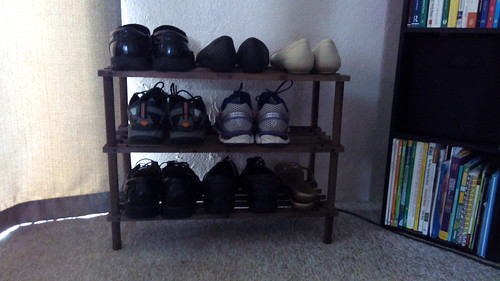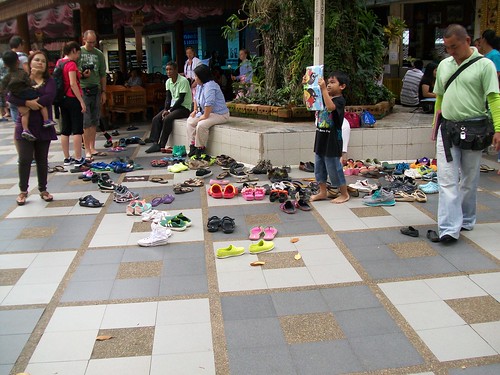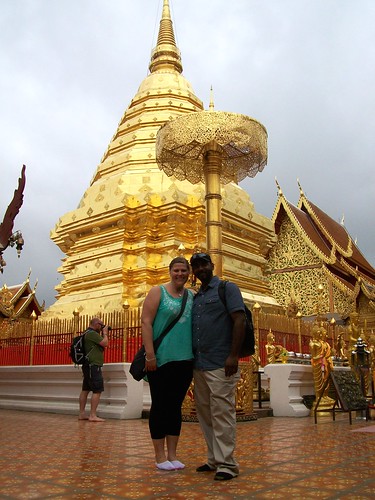As a white American with Eastern European heritage, I come from a culture where you do not remove your shoes as soon as you enter someone else's house. You wear your shoes in the house, removing them when sitting or climbing on things such as a bed or sofa. Growing up, I had one friend whose family removed their shoes when they entered their house. I found this extremely strange as a child. I always had questions, such as do they leave all their shoes by the door? I had about eight pairs of shoes as a child, and I wondered if I lived there, would all eight pairs stay by the door all the time? How could you see how your outfit looked without seeing the whole complete outfit, including shoes? Does their dad get to keep less of his shoes by the door since they take up more room? What if you forgot something in the house and had to run back in at last minute? I had so many questions about this culturally strange custom.
Fast forward to 2011. I meet my now husband at a beach bonfire party in Bermuda where we both live and work. The first time I entered his house to "casually hang out," I saw him remove his shoes and place them by the front door. I followed suit, awkwardly removing my shoes as well, curling my toes under, as I felt slightly strange and exposed. Shoes, like clothes, can be worn like armor; imagine a pair of knee-high leather black books or even sexy high heels, all armor. A first "hang-out" with a guy you think is extremely attractive requires armor. I, however choose to wear flip-flops - it is Bermuda.
Many cultures participate in the custom of removing of shoes upon entering a home or religious place. Mainly Asian cultures, most notably Japanese and Indian, partake of this etiquette.
This trend of removing shoes continued every time we entered his house. Eventually, I noticed a shoe rack by the door. When we made the "meet the parents trip," I followed his lead, removing my shoes upon entering his parents' house. When we trekked to my parents' house, he removed his shoes as soon as we entered, politely inquiring where he should leave them. "Oh, you don't need to do that," I said, waving my hand. When it became clear he felt more comfortable removing them, I said, "Um, under that chair over there," gesturing to a random chair in the corner of the dining room. He remained comfortable and shoeless, happily sipping through cocktail hour and dinner while all other party members kept their shoes on...proving how completely comfortable he was remaining true to himself, even in something so simple and small as removing his shoes.
Years later, we share a house with a shoe rack by the door and the custom to remove our shoes upon entering. I finally solved the answers to the questions of my youth about shoe removal. (We share equal shoe rack real estate. I rotate out shoes depending on seasons. We have a shoe storage area in our bedroom as well.) A shoe rack quietly sits by our front door and normally doesn't look as organized and tidy as it does in the below picture.

Our worldwide travels have taken us to many different lands and cultures where I have removed my shoes many times. This picture shows the piles of shoes outside the temple Wat Phra That Doi Suthep in Chaing Mai, Thailand. And, no, no one has ever stolen my shoes.


I now travel with footie socks, which have saved me from walking on public space without anything protecting my feet.
Marrying into a West Indian and Hindu culture meant participating in this custom. Taking it on as my own. Just like the first time I wore a sari or had henna drawn on me, I embraced this custom as my own.

Lindsey Sirju is the Bermuda Editor for Wandering Educators
All photos courtesy and copyright Lindsey Sirju
